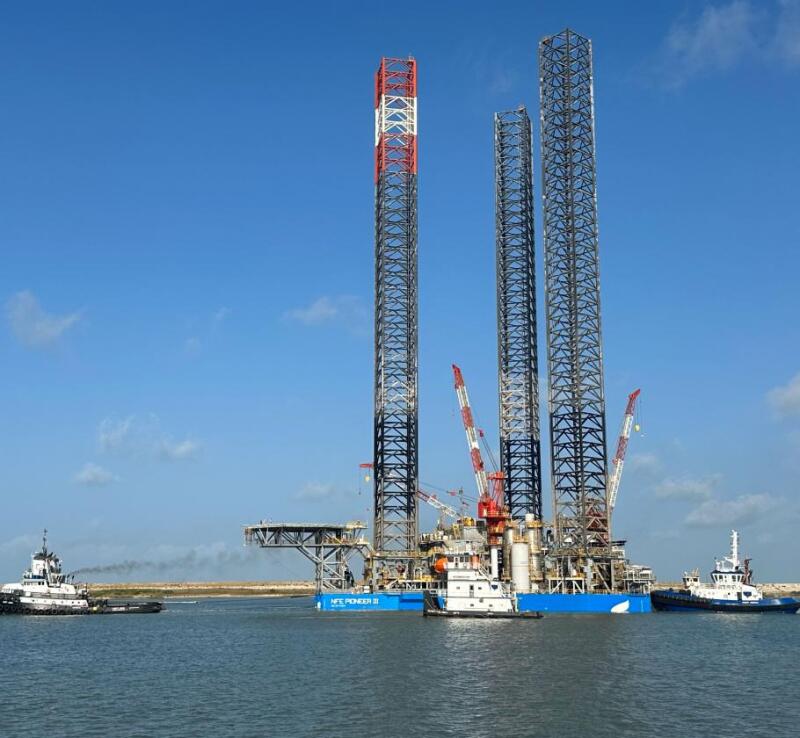New Fortress Energy is one step closer to the realization of its first “Fast LNG” project offshore Mexico.
The company confirmed that the NFE Pioneer III—a converted jackup rig—began its transit across the Gulf of Mexico on Friday from the Kiewit Offshore Services shipyard in Ingleside, Texas, to Altamira, Mexico. The accommodation and operations unit is one of three retrofitted jackups that will be used to liquefy up to 1.4 mtpa of natural gas, but not from subsea wells. In this project, the gas will be supplied via a subsea pipeline originating in Texas.
The Pioneer III will host the project’s main control room along with three industrial gas turbines that will power the entire offshore liquefaction facility. The jackup also has living quarters for around 80 personnel.
New Fortress called the transit “a huge milestone” for its Fast LNG concept which it designed to quickly monetize otherwise stranded-gas assets around the world. The New York-based energy company committed to the idea in 2021 when it purchased two jackup rigs for $31 million from Maersk Drilling and said they would be repurposed to host gas liquefaction equipment. The company has since announced plans to construct four additional fast LNG facilities.
New Fortress said in June that operations at Altamira would begin in the third quarter of the year after it received approval for an export permit from Mexico’s Ministry of Energy for up to 7.8 million metric tons through 2028. New Fortress, which described the permit as “the final piece of the puzzle,” had previously hoped to achieve first production as early as March of this year.
The nearly $1-billion project at Altamira will be followed by two other 1.4-mtpa LNG units that New Fortress is constructing in Texas. All three units are part of an agreement the company finalized last year with Mexico state power and gas utility Comision Federal de Electricidad (CFE). The deal gives CFE a share of the production from the offshore LNG facility while committing New Fortress to using CFE’s firm capacity from TC Energy’s Sur de Texas-Tuxpan Pipeline.

The next set of LNG trains will use a similar blueprint as the first which includes standardized liquefaction and gas treatment modules that are assembled at a shipyard. New Fortress has said that each LNG train takes up to 16 months to build and between 4 to 6 additional months to complete installation and commissioning.
While initially planned to be deployed on fixed-leg platforms, New Fortress said in May the next two units will instead be installed onshore at the Altamira gas terminal with operations expected to begin by the second half of next year. Mirroring a trend that began in the US a decade ago, the onshore facility was originally built in 2006 as an LNG import terminal but has since undergone a conversion to support exports.
New Fortress is also developing a Fast LNG project in partnership with Mexico’s state-owned oil company Pemex at the Lakach gas field. The host facility for the 1.1-Tcf deepwater project offshore Veracruz, Mexico, is the Sevan Driller, a circular hull drilling unit that is undergoing conversion in Singapore.
Additionally, New Fortress is seeking regulatory approvals for an LNG project off the coast of Louisiana. The proposed project would be located 16 miles offshore Louisiana and involve two 1.4-mtpa LNG units along with an LNG floating storage unit to support high-volume exports to global markets.


